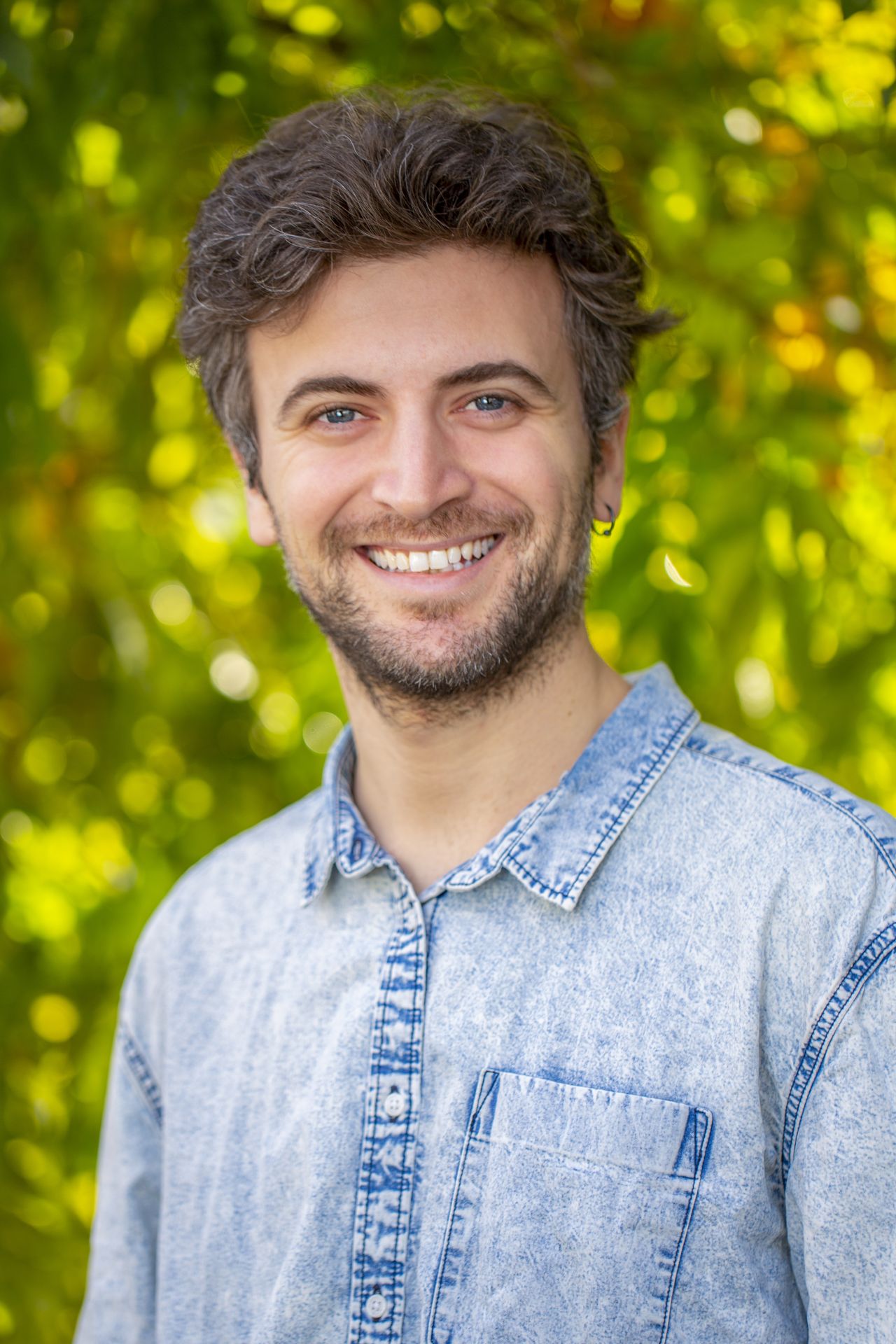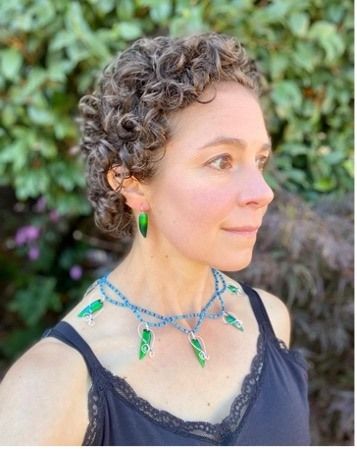Heather Andrews – An entomologist celebrating nature's beauty
Meet Heather Andrews, an artistically inclined entomologist whose art highlights nature’s beauty with a whimsical twist.
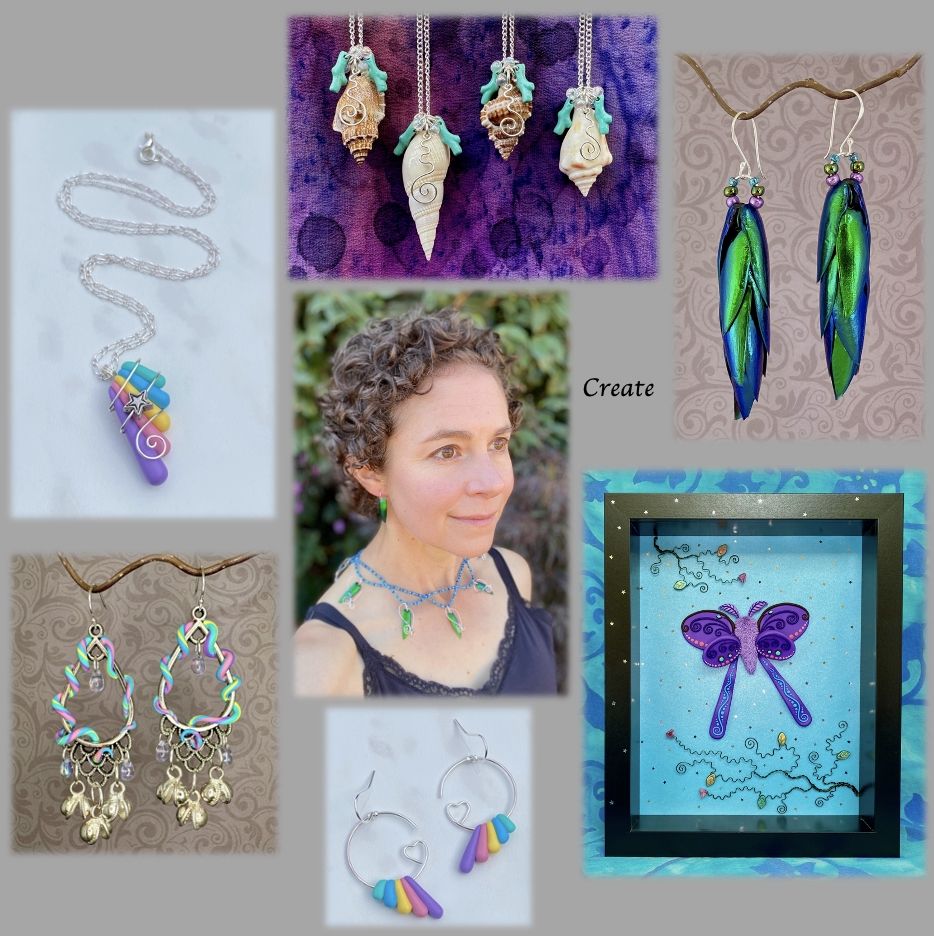
Heather Andrews and her insect-themed artwork. Image: © Heather Andrews
At the crossroads: Entomology or art
Heather Andrews is a faculty research assistant at Oregon State University, specializing in developing integrated pest management strategies for orchard crops, primarily focusing on hazelnuts. Her work involves studying a variety of insect pests, including filbertworm, brown marmorated stink bug, and codling moth, to find effective solutions for protecting crop yields. In addition to her scientific endeavors, she creates insect-inspired art, including colored pencil drawings and jewelry.
Heather's journey into science began during her childhood summers at science camps at UC Berkeley, where building cameras, conducting fieldwork, and performing experiments sparked her curiosity. Her passion for art also flourished during this time, eventually leading her to start her academic journey as an art major. Unsure about her career path, she followed the advice of a mentor and transitioned into biology – a decision she has never regretted.
Today, Heather combines her dual passions: protecting orchard crops from pests during the day and creating art inspired by her work in the evenings. Her colored pencil drawings often tell real-life stories of the insects she studies, blending her scientific expertise with her artistic talent.
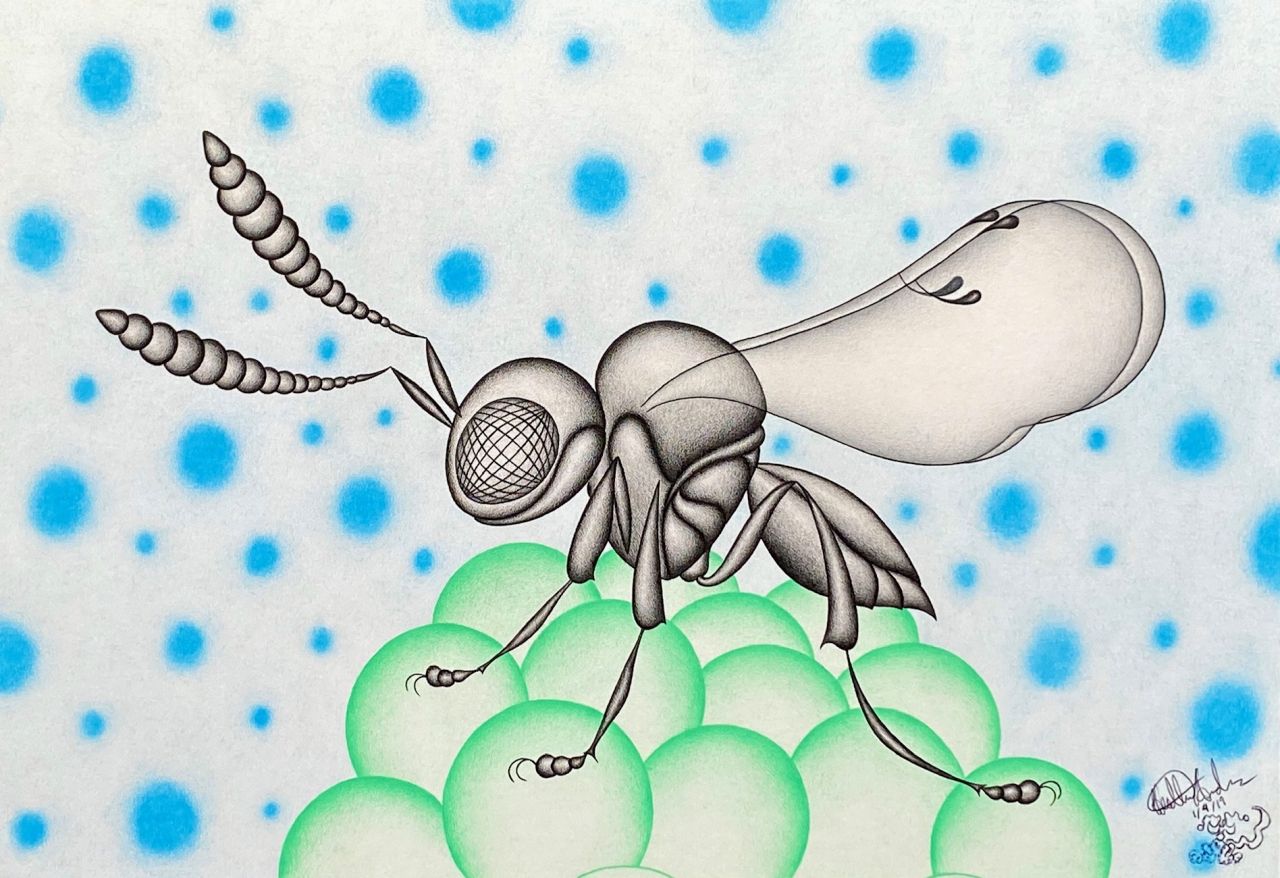
A samurai wasp (Trissolcus japonicus) is sitting on a pile of brown marmorated stink bug (Halyomorpha halys) eggs. The wasp deposits her eggs into stink bug eggs. The baby wasps (larvae) will devour the content of the stink bug eggs and develop into an adult wasp. Image: © Heather Andrews
For curious ones
Learn more about the brown marmorated stink bug.
Science outreach with an artistic touch
Insects are not often celebrated for their beauty, but rather associated with stings, itchy bites, and annoying buzzing sounds. To change this perception, Heather participates in educational events, where she combines entomology lessons with hands-on art workshops for both children and adults. These sessions not only spark curiosity but also help participants appreciate the science that inspires her artwork.
Heather uses drawings to educate people about the role of key insects in her environment and in the ecosystem. In her drawings, she captures realistic scenes from nature, combining real organisms with her unique artistic style.
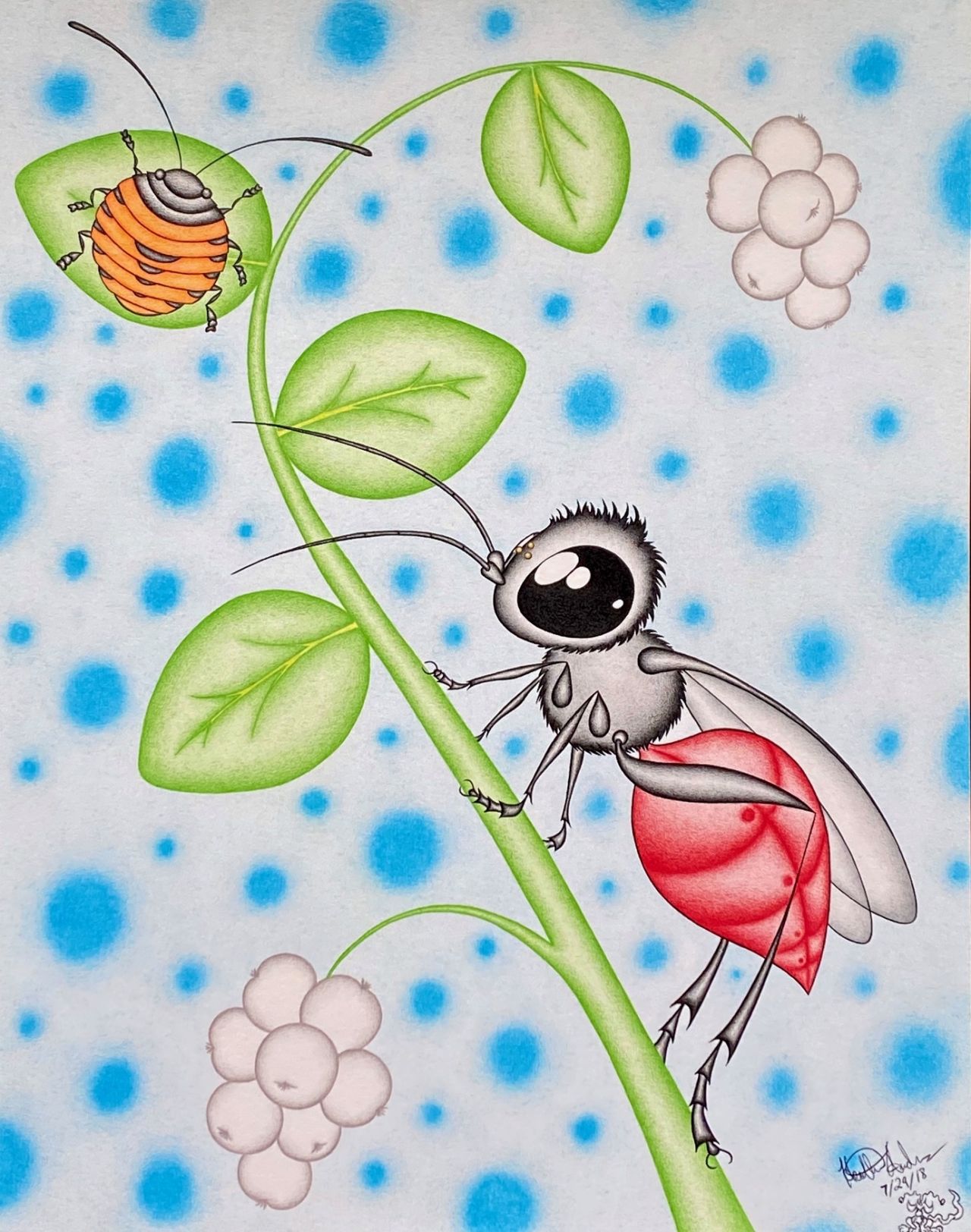
Astata bicolor wasp is approaching a stink bug nymph to paralyze her and take her underground. She will eventually lay her eggs on the nymph which will be eaten alive by larvae of the wasp.
What beetles use to blend in, we use to stand out
Beetlewing adornments were valued in ancient Asian cultures for their durable, iridescent beauty, used to enhance textiles, jewelry, and art. Made from the glossy elytra of jewel beetles (Buprestidae), these wings symbolized elegance and have retained their brilliance for centuries. Heather is keeping an ancient tradition alive by creating stunning earrings and necklaces from natural beetle wings. Since jewel beetles are not native to Oregon, she ethically sources them from a company in Thailand, ensuring the beetles have completed their life cycle naturally in the forests. Though she once experimented with collecting Pacific flat-headed borers, their small size and dull brown color proved unsuitable for her art.
Heather drills holes in the vibrant beetle wings and wires them to craft her jewelry. She doesn’t pursue this as a business, finding it potentially stressful, but she enjoys showcasing her work at art shows. These events allow her to engage with curious audiences, often surprising them when they mistake the wings for metal. She explains that the metallic appearance comes from layers of macrocrystal structures in the wings that reflect light to produce vibrant colors. Additionally, she shares that the wings' durability is due to chitin in the exoskeleton, eliminating the need for chemical preservation.
For Heather, beetlewing jewelry is a creative way to educate people about insects. She enthusiastically explains how the structural coloration of the elytra and the beetles’ emerald hues serve as camouflage in their native Thai forests. She also introduces audiences to other insect-based activities, like her "cockroach paintings," where giant Madagascar cockroaches create colorful art by walking over paper with non-toxic dyes applied to their undersides. "Kids love it," she says with a smile.
Here is Heather Andrew's shop on Etsy.
One artist that left a mark on Heather
Christopher Marley is an artist who transforms the beauty of nature into art, using insects, minerals, and other organic forms. His meticulously arranged pieces showcase the intricate patterns and colors of the natural world, blending science and art in a striking way. Marley's work celebrates biodiversity and fosters a deeper appreciation for the wonders of nature, leaving a lasting impression on Heather.
To view this content, you must accept marketing and third-party cookies.





